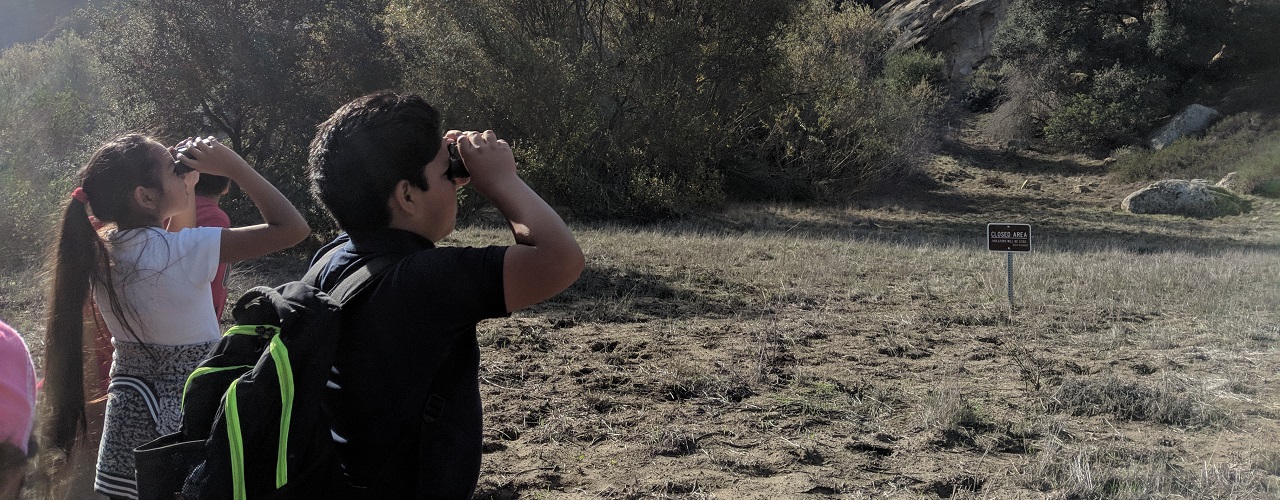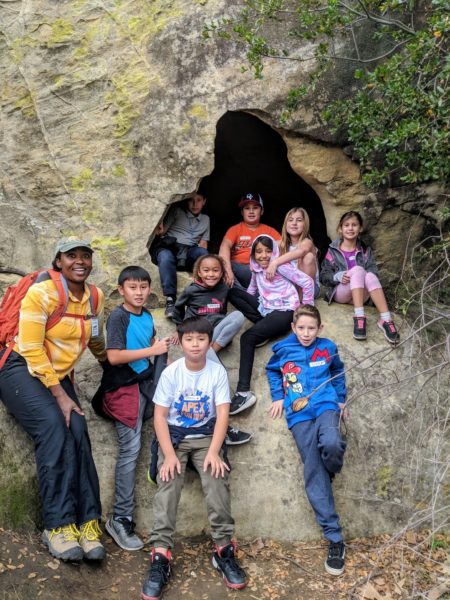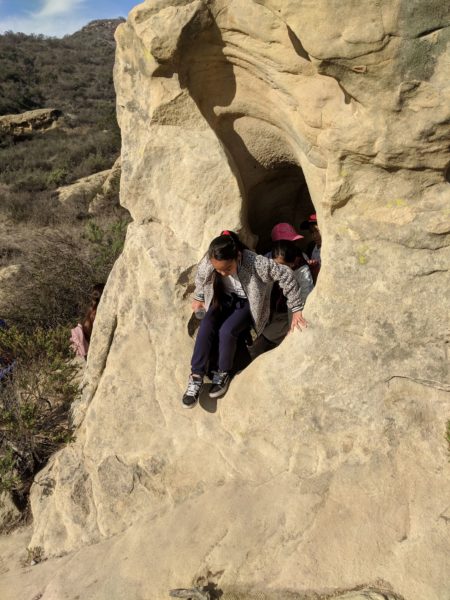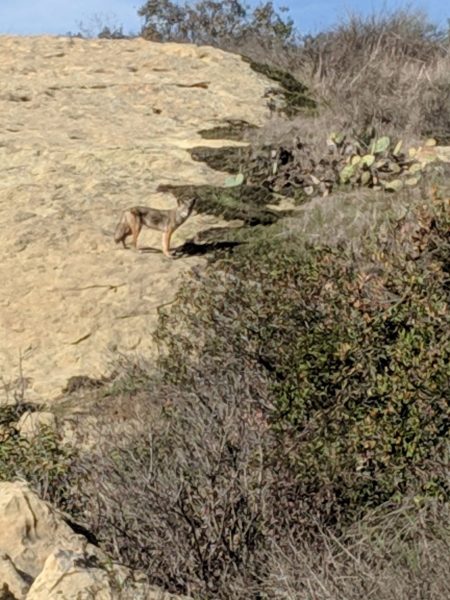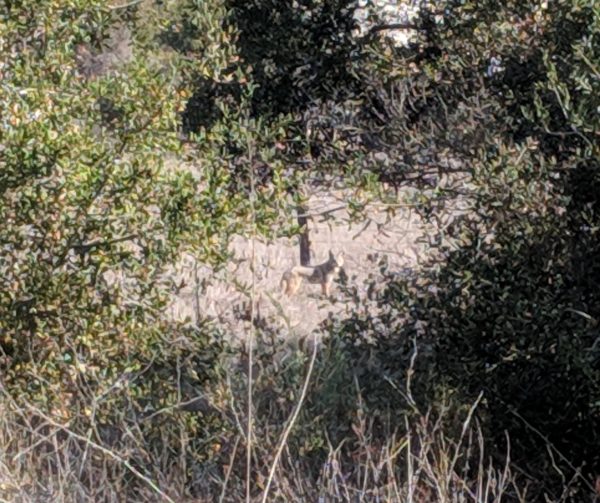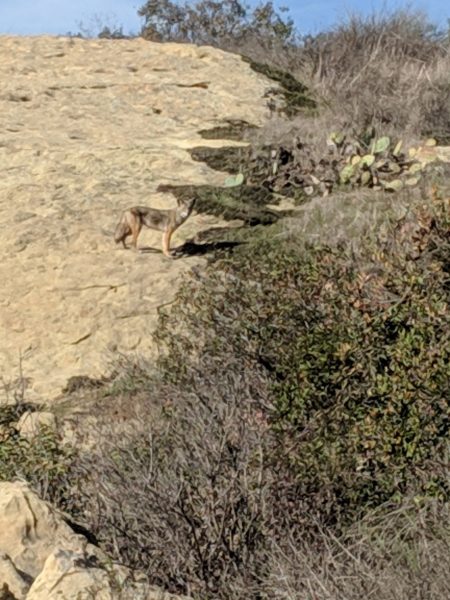Last week, a busload of 65 fourth graders, four teachers and two chaperones arrived from a Santa Ana elementary school at Willow staging area for an interpretive hike. Each school year, Laguna Canyon Foundation hosts 75 or so of these trips (depending on weather and red flag alerts), and thanks to the generous support of our grantors and donors, they’re offered at no cost to the students or schools.
The bus was buzzing with children’s laughter and squeals of excitement. It was a long drive and the students were ready to break free! After the logistics of chatting with the adults about trail safety and dividing the students into four groups, our trained and passionate field educators took them on an amazing journey, a hike to investigate: What is a Habitat and How is it Sustained?
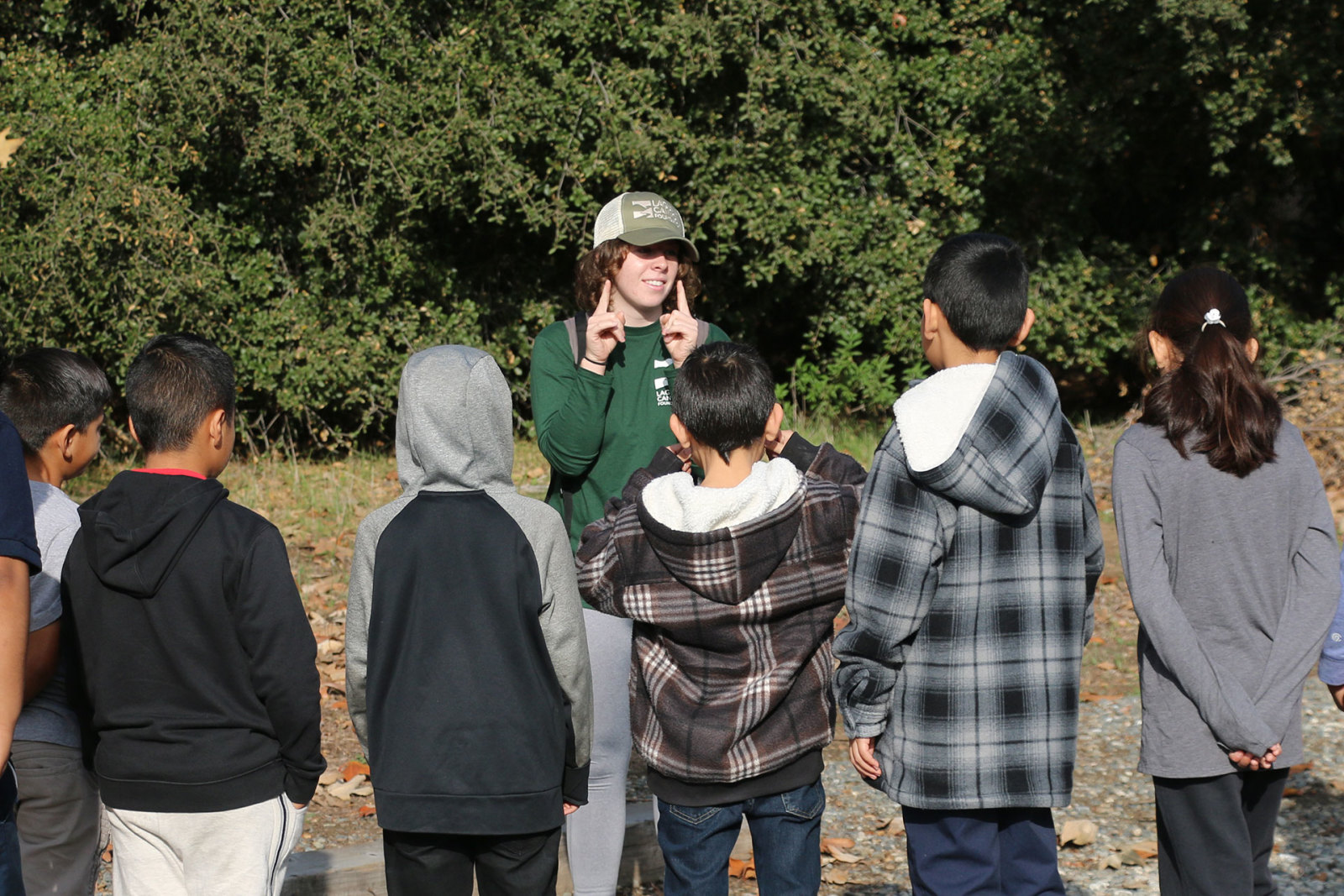
The children learn that in this habitat all creatures have a “job:” movers, fertilizers, soil looseners, garbage decomposers, and population controllers.
Students may go through the “magic portal” (one of the caves) and become a scientist. Or, with their leader, they may ponder what it really means to be a scientist and come to find out that scientists don’t need a lab, goggles or a microscope. They just need their brain, an inquisitive spirit and a fertile area to research.
The cave at the entrance of Willow trail and the mysterious rock formations along Laurel Canyon provide that fertile ground that inspires visiting students to wonder about this wild land. These trails also allow our field instructors to use their naturalist expertise to turn any wildlife encounter on the trail into an exciting learning experience for the students. Fourth graders – like most children – want to see megafauna. “Will we see coyotes…lions…deer? Will we see snakes?” the children ask.
The field instructor explains what native animals live in this coastal sage scrub habitat and lets the students know that yes, sometimes we do see these animals, but we will surely see evidence of them because this is their habitat, their home. The children learn to use their scientific minds and alert senses to find that evidence: scat, tracks, nibbles off of branches, nests in high caves and under coast live oak trees.
The students walk along Laurel Canyon trail. The field instructor points out some scat. “Ewww,” the children say. Of course, they would, but as they look closer, in the scat they observe seeds and fur and the deductions begin.
“What is an animal that eats both plants and meat?” the field instructor asks.
Required in fourth grade is the study of living things, their structures and how they interact with their environments, so they know this answer: “Omnivore!” shout the students.
“What native animal lives here that is an omnivore?”
“A coyote?” ventures one student.
“Correct!” And with that answer, the educator can discuss several phenomena with the student-scientists in the wonderful laboratory of the wilderness. They can deduce that this scat is likely a coyote’s. Perhaps the coyote ate a bunny or a gopher as well as some plants. What jobs did the coyote perform? Clearly the coyote scat is moving seeds. What about population controlling?
Coyotes may be a rare sight in the park, but Field Instructor Chrisha Favors snapped these shots when this week’s class was lucky enough to see one.
As the children hike on, they might see gopher holes (soil looseners), a wood rat nest, a stink bug (decomposers) or snake tracks. Why are there no acorns on the oak tree? Why is it greener along the right side of the trail? Might water have flowed here? Students may hear the call of a raven as it chases away a red-tailed hawk – or is it the other way around? All these observations provoke questions and conversations about what creatures do to survive and how each of the plants and animals has a role in creating and sustaining habitats both big and small.
Through these conversations and inquiries, the students begin to understand that everything in this habitat is connected. This lesson is essential because it inspires students to develop a deeper understanding of the value of this natural wild place, and their important role in protecting it.
They are becoming our future environmentalists.
